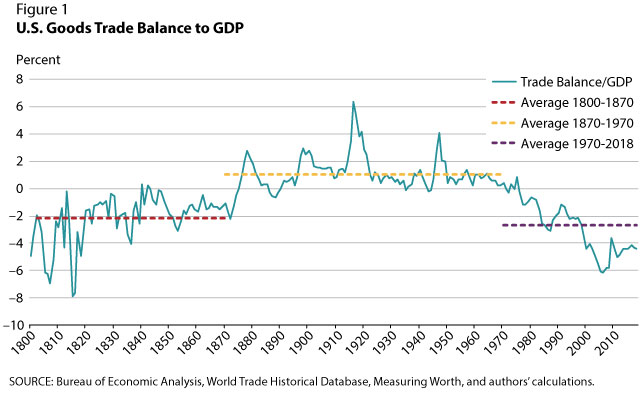Convertibility of Indian Rupee
Contents:


If, along with convertibility, there is liberalisation of import of gold, there would be an effective deterrent to the smuggling of gold. The country should have an appropriate industrial policy and a favourable investment climate. The interview is scheduled from 24th April to 18th May 2023.UPSC IAS Notification 2023 is also out for 1105 vacancies.
Although there is a lot of freedom to exchange local and foreign currency at market rates, the Indian rupee is a partially convertible currency, meaning the exchange of higher amounts is restricted and still needs approval. Under the Liberalised Exchange Rate Management System introduced in March 1992, 60 percent of all receipts under current transactions comprised of merchandise exports and invisible receipts could be converted at the free market rate quoted by the authorised dealers. In case of the remaining 40 percent of receipts, the rate applicable was the official rate of exchange. In general, the convertibility of rupee means that those who have a foreign exchange (e.g. US dollars, Pound Sterlings, etc.) can get them converted into rupees and vice-versa at the market-determined rate of exchange. Considerable evidence has accumulated over the yeas that for most countries, deregulation of foreign trade transactions must precede deregulation of international capital account flows. For an economy in transition from a controlled to a market based one, international capital movements can be highly destabilizing and disruptive.
Non-Convertible Currency: What it is, How it Works – Investopedia
Non-Convertible Currency: What it is, How it Works.
Posted: Wed, 27 Oct 2021 07:00:00 GMT [source]
A blocked currency is one that can not be traded on the forex market, usually due to government restrictions. One had to seek the permission of the central bank to purchase foreign exchange. India is expected to become a truly global economy in the near future, and it will need fuller integration into the global economic system. Permission to mutual funds to invest abroad in companies, listed on overseas stock exchanges and having at least 10 percent shareholding in a company listed on a recognised stock exchange in India on January 1 of the year of investment. The overall cap for investment abroad by mutual funds has been increased to U.S. $ 1 billion. In regard to non-residents, the Committee suggested that capital transfers from non-repatriable assets held in India should be allowed subject to an appropriate ceiling.
More Banking and Financial Awareness Questions
Full convertibility will open the doors of many big international players to invest in these sectors, enabling much-needed reforms and bringing variety to the Indian masses. India has taken several steps to alter some of its standardized currency policies including demonetization. The CAC Committee recommended that there should be participation in the international commodity market. The convertibility or floating of rupee would indicate the true value of it.

Trading of the INR is still far lower than other currencies such as the euro. With increased participation from global players, new businesses, strategic partnerships, anddirect investmentsflourish. It also helps in the creation of new employment opportunities across various industry sectors, as well as nurturing entrepreneurship for new businesses.
In case the exportable products have high import-content, to that extent, a higher market-determined rate of exchange can reduce profitability of exports. In such a situation, the import substitution would receive a boost not only in respect of exportable products but also in other imported products. If the free market rate were higher than the official rate of exchange, the profitability of exports would increase. Non-convertibility can generally be defined with reference to transaction for which foreign exchange cannot be legally purchased (e.g. import of consumer goods etc), or transactions which are controlled and approved on a case by case basis . A move towards free convertibility implies a reduction in the number / volume of the above types of transaction.
Convertibility of currency means when the currency of a country can be freely converted into the foreign exchange at the market-determined rate of exchange. India is a capital deficient country, and hence needs foreign capital to fund its growth. If a substantial portion of its trade is in Rupee, non-residents would hold Rupee balances in India which would be used to acquire Indian assets. Large holdings of such financial assets could heighten vulnerability to external shocks, managing which would necessitate more effective policy tools. Although the rupee is not fully convertible on capital account, yet in respect of some elements, it had convertibility on capital account even earlier.
Current Affairs
If there is appreciation of rupee, consequent upon its free convertibility, the imports are likely to increase and have adverse effect on BOP deficit. If full convertibility causes appreciation of rupee, the possibility of reduction in exports cannot be ruled out. The country should have trade-oriented development strategy and adequate incentives for export growth. In respect of imports under advance licenses and imprest licenses and import for replenishment of raw materials for gem and jewellery exports. As the use of Rupee becomes significant, the bargaining power of Indian business would improve adding weight to the Indian economy, enhancing India’s global stature and respect.

Overseas investments by SEBI registered Indian investors including Mutual Funds and short- term borrowing by the All India Financial Institutions within limits. As a result of full convertibility of rupee, the illegal remittance would not remain attractive and, consequently, larger remittances from abroad would take place through proper channel. In July, 2022 the RBI has introduced a mechanism to facilitate international trade in rupees. Use of Rupee in cross-border transactions mitigates currency risk for Indian business.
The re-exam was tentatively scheduled on 18th December 2022 and the exam that took place on 25th September 2022 will not be considered. The Territorial Army had released the official notification for Territorial Army Exam 2022. Through this exam, Territorial Army Officers will be recruited to serve as the secondary defense force of the nation. The candidates must go through the Territorial Army Exam Preparation Tips which will help the candidates to make a better strategy to clear the exam.
This is necessary to achieve closer integration of the Indian economy with the global economy. Amid a lack of suitable regulatory control and rates subject toopen marketswith a large number of global market participants, high levels of volatility,devaluation, or inflation in forex rates may happen, challenging the country’s economy. People wanting to engage in foreign travel, foreign studies, the purchase of imported goods, or to get cash for foreign currencies received were all required to go through the RBI.
Current Account Convertibility
Since 1994, Indian rupee has been made fully convertible in current account transactions. The exchange rate was earlier controlled by RBI for the conversion of Indian currency into foreign exchange. The rupee is both convertibles on the capital account and the current account. The size of the current account deficit should be within manageable limits and the debt service ratio should be gradually reduced from the present 25% to 20% of the export earnings.
A convertibility of rupee implies currency shows greater fluctuation than an inconvertible one and thus gives greater scope for destabilising speculation. Indian banks will be able to borrow and/or lend to foreign banks in foreign currencies. Fancy buying a house on the coast of Florida or buying a million-dollar yacht in London? At present, any Indian individual or business would need permission from authorities to do so. After full convertibility, there will be no limits on the amounts exchanged and no need for approvals. The growing international interest in the Indian rupee is evident from the development ofoffshorerupee markets in locations like Dubai, London, New York, and Singapore.
What is Capital Account Convertibility? Is India ready for it yet? – Business Standard
What is Capital Account Convertibility? Is India ready for it yet?.
Posted: Tue, 26 Oct 2021 07:00:00 GMT [source]
A reduced role for convertible currencies in external transactions could lead to reduced reserve accretion. At the same time, however, the need for reserves would also reduce to the extent the trade deficit is funded in Rupees. A fully-convertible currency is highly liquid, and very desirable to other countries.
The correct answer isFreely permitting the conversation of rupee to other currencies and vice-versa. Finally, there will be no ceiling on India’s external debt since the GOI—knowing well that rupee can now be used for debt serving—will borrow without limits. The RBI should fix an exchange rate band of 5% around real effective exchange rate and should intervene only when the Real Effective Exchange Rate is outside the band.
- Reducing dependence on foreign currency makes India less vulnerable to external shocks.
- The offers that appear in this table are from partnerships from which Investopedia receives compensation.
- Full convertibility of rupee will enable the Indian investors to hold internationally diversified investment portfolio.
- The Tarapore Committee defined CAC as “the freedom to convert local financial assets into foreign financial assets and vice versa at market-determined rates of exchange.” CAC would permit anyone to move freely from local currency into foreign currency and back.
- There is a basic difference between current account convertibility and capital account convertibility.
- While the current account deals mainly with the import and export of goods and services, the capital account is made up of the cross-border movement of capital by way of investments and loans.
This allows easy access to capital for different businesses and sectors, positively impacting a nation’s economy. The Committee observed that most countries considered strong balance of payments fiscal consolidation and strengthening of financial system as the necessary prerequisites for the success of capital account convertibility. In the countries studied by the Committee, there was the removal of restrictions on inflows and related outflows by the non-residents and residents. The term convertibility of a currency indicates that it can be freely converted into any other currency. The removal of quantitative restrictions on trade and payments on current account.
What Is Currency Convertibility?
Earlier, the UPSC IAS Personality Test/ Interview Admit Cards for the 2022 cycle were out on 13th January 2023. The candidates are required to go through a 3 stage selection process – Prelims, Main and Interview. The marks of the main examination and interview will be taken into consideration while preparing the final merit list. The candidates must go through the UPSC Civil Service Mains strategy to have an edge over others.
Capital controls are most prevalent in emerging market countries due to the higher uncertainty in their economic outlook. In the wake of the 1997 Asian financial crisis, many countries in the region imposed tight capital controls to reduce the threat of a run on their currency. Countries with a currency that has poor convertibility are at a global trade disadvantage because transactions don’t run as smoothly as those with good convertibility.
As of now, convertibility of the rupee into foreign currencies is almost wholly free for current account i.e. in case of transactions such as trade, travel and tourism, education abroad etc. A major step in the direction of current account convertibility was adopted by India in March 1993, when the foreign exchange budget was abolished; the exchange rate was unified and; the transactions on trade account were freed from exchange control. The determination of exchange rate of the rupee was left to the market forces. Currencies such as the South Korean won and the Chinese Yuan are known as partially convertible currencies.
Indian rupee may not be an option, for now – The Financial Express
Indian rupee may not be an option, for now.
Posted: Sat, 30 Jul 2022 07:00:00 GMT [source]
The cautious approach in respect of full convertibility of rupee was fully justified in view of the Mexican crisis and subsequent East Asian crisis. The full convertibility of rupee required the capital account convertibility of rupee along with the current account convertibility. Full convertibility of rupee was not introduced by the government as it was risky in the conditions of large deficit on current account faced by the country.
Protection from currency volatility not only reduces cost of doing business, it also enables better growth of business, improving the chances for Indian business to grow globally. Internationalisation of the rupee is a process that involves increasing use of the local currency in cross-border transactions. A restricted market is one where trading of a nation’s currency is controlled to maintain a specific value that may not reflect actual market pricing.
In essence, current account convertibility remains within the institutional trading realms. At the beginning of the reforms, the rupee was made partially convertible for goods, services, and merchandise only. During the mid-1990s, the rupee was fully made current account convertible for all trading activities, remittances, and indivisibles. Capital account convertibility allows freedom to convert localfinancial assetsinto foreign financial assets and vice-versa.
At a later stage, certain select Non-Bank Financial Companies would also be permitted to act as Ads in foreign exchange markets. The balance 40% of the earnings should be sold to RBI through authorised dealers at the official rate of exchange; this amount of foreign exchange would be made available by RBI for financing preferred imports, bulk imports, etc. A rising, unregulated rupee makes Indian exports less competitive in the international markets. Export-oriented economies like India and China prefer to keep their exchange rates lower to retain the low-cost advantage. Once the regulations on exchange rates go away, India risks losing its competitiveness in the international market. Businesses can easily raiseforeign debt, but they are prone to the risk of high repayments if exchange rates become unfavorable.
Economics of a specific country can greatly impact, and be impacted by, currency convertibility. Additionally, the advent of digital currencies has created a new category, virtual convertibility. There tends to be a correlation between a country’s economy and the convertibility of its currency.
As economies slump into recession investors will often seek investment offshore or convert their money into one of the safe-haven currencies. To combat this and ensure money doesn’t flood out of the country, some governments put controls in place to reduce capital flight during trying economic times. A blocked currency is a currency that can’t freely be converted to other currencies on the forex markets as a result of exchange controls. Such money is mainly used for domestic transactions alone and does not freely exchange with other currencies, often due to government restrictions at home or abroad. In general, the convertibility of rupees means that those who have a foreign exchange (e.g. US dollars, Pound Sterlings, etc.) can get them converted into rupees and vice-versa at the market-determined rate of exchange.
